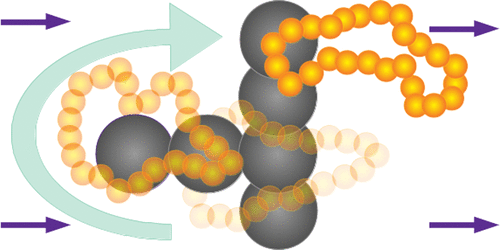The motion of polymers in complex environments is ubiquitous: from 3D printing to gel electrophoresis of DNA in gels. The role of topology in the transport properties of polymers is well known: linear, ring and knotted polymers display characteristic behaviours. This empirical observation of how polymers move under the drag of an external field is widely used (for instance in gel electrophoresis) to infer physical and topological properties of molecules from their macroscopic motion through complex media.
Albeit this is a known effect, a satisfactory and predictive theory that is able to describe the motion of even the simplest topologically non-trivial objects, i.e. ring polymers, in complex environments is missing.
In this work, we propose a simple model to describe the sieving process observed in systems of ring polymers moving through gels that possess dangling ends. By performing Molecular Dynamics simulations we provide experimentally verifiable analytical predictions which can be used as a reference guide for improving filtration procedures of circular filaments.
Finally, we believe that this work is not only important to understand how ring polymers move in complex media but also to rationalise and materialise the use of topologically non-trivial molecules as microscopic probes for complex substrates.
Download “Article Preprint” Topological_Sieving.pdf – Downloaded 348 times – 564 KB
Download a copy of the manuscript (preprint version)

